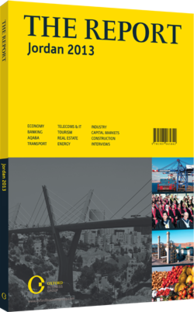Retail therapy: Opening the market to a wider range of investors could help to stimulate activity
With bond issues equivalent to around one-third of the total market capitalisation of the Amman Stock Exchange (ASE), the fixed-income market in Jordan clearly has some weight. Yet with few of these bonds ever traded, many market watchers wonder how this potential could be more fully realised. Opening the mar-ket outwards could be one way, bringing in different types of investors as well as more issues, with positive knock-on effects for the economy as a whole.
GOVERNMENT ISSUES: Some JD3.96bn ($5.57bn) in government bonds were listed on the ASE in 2012, along with JD1.88bn ($2.65bn) in T-bills. Two bonds, one from the Housing and Urban Development Corporation and the other from the Water Authority, completed the picture, totalling JD56m ($79m) between them. In recent times, the market has been dominated by issues from government and other state institutions. Indeed, with the government anxious to finance its budget deficit – which has been growing in recent years – the debt market has been a frequently used tool.
The troubling budget deficit was evident in the ris-ing discount rates across the government’s issues dur-ing the year. The rate for three-month T-bills rose from 2.68% to 2.88%, for six-month bills from 3.1% to 3.72%, for nine-month bills from 4.04% to 4.15% and for 12-month bills from 3.64% to 5.82%. As this suggests, the T-bills side has also been characterised by short-term issues. The year 2012 saw 28 issues in total, with three of these being three-month issues, totalling JD200m ($281m); eight of them six-month issues, totalling JD431m ($606m); and three of them nine-month issues, totalling JD225m ($316m). The remainder were 12-month issues, with these making their entrance later in the year and totalling JD1.03bn ($1.44bn).
BONDS: On the bond side, the terms followed the reverse pattern, starting the year with four- and five-year maturities and ending with two- and three-year ones. Five-year bonds totalled JD125m ($176m), four-year JD138m ($194m), three-year JD1.15bn ($1.62bn) and two-year JD2.55bn ($3.59bn). As in T-bills, bonds also saw discount rates rising. Two-year bonds rose from 5.78% to 7.65%, except for those maturing between February 4, 2014 and April 4, 2014, which saw a decline from 6.42% to 6.37%, while three-year bonds went from 6.11% for January 29, 2014 maturities to 8.3% for Octo-ber 14, 2015 maturities. Four-year issues rose from 6.49% to 7.25%, while five-year bond discount rates went from 7.49% to 7.75%. In 2013 JD350m ($492m) of outstanding debt will mature, much less than the JD956m ($1.34bn) that matured in 2012 and the JD2.4bn ($3.38bn) in 2014. After that, the amount – not count-ing future potential issues – trails off, with a total of JD4.73bn ($6.65bn) maturing in the 2013-16 period.
A US offer to back Jordanian bond issues may help lower the kingdom’s borrowing costs and boost con-fidence in the country’s securities. During a March 2013 visit to Amman, US President Barack Obama said his administration would work with Congress to obtain approval to issue a guarantee for Jordanian bonds in the international market. While no timing has been given, Obama did say they would be in place sometime in 2013. Once in effect, the US guarantees on Jordan-ian bonds would allow Amman to borrow funds on international markets at terms and costs similar to those of US sovereign bonds (see analysis).
ISLAMIC BONDS: One important development in 2012 was parliament approving a law in September allow-ing the issuance of Islamic bonds, or sukuk, by the gov-ernment. Corporate sukuk are already established in the kingdom, with Al Rajhi Cement’s 2011 JD85m ($120m), seven-year sukuk widely welcomed and heavily sub-scribed. The corporate bond market, however, is large-ly moribund, with few issues and no trading.
Despite the number of listed T-bills and bonds, there was virtually no trading on this market either during the year. Only institutional investors are allowed to pur-chase bills and bonds. Excluding retail investors has thus limited the scope for activity, while the culture of insti-tutional investors is largely that of holding bonds until maturity, rather than creating a market by trading them.
You have reached the limit of premium articles you can view for free.
Choose from the options below to purchase print or digital editions of our Reports. You can also purchase a website subscription giving you unlimited access to all of our Reports online for 12 months.
If you have already purchased this Report or have a website subscription, please login to continue.

